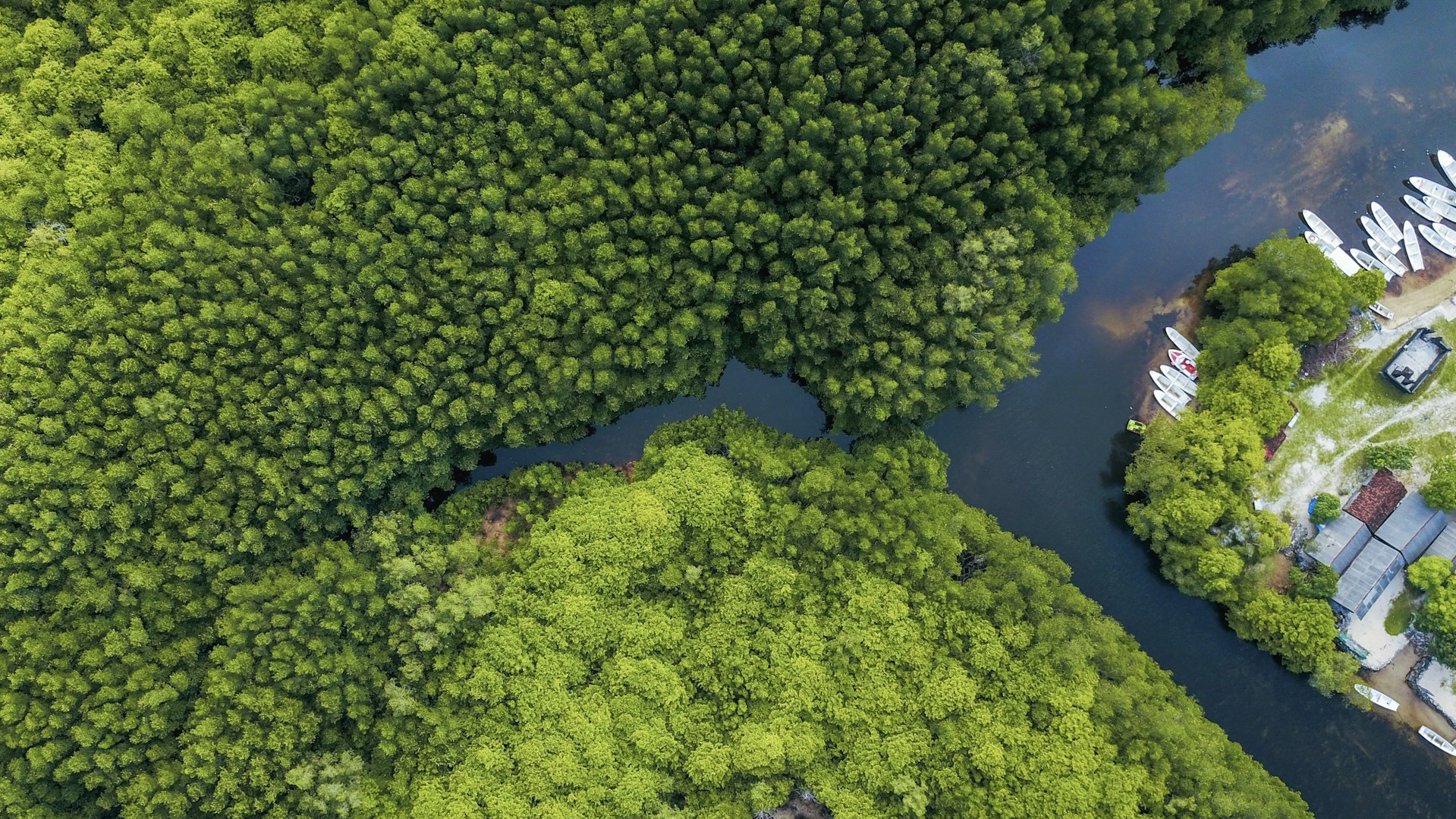Mangroves are trees and shrubs that grow in thick groves right along the ocean’s edge, often with a tangle of roots and branches that weave in and out of the water.
During a storm, these roots and branches can help calm choppy waves and reduce the risk of flood damage farther inland.
So as climate change creates more extreme weather, mangrove thickets can help protect coastal communities from increasingly intense storms.
Mangroves can also help reduce global warming.
That’s because mangroves grow very quickly. And as they grow, they absorb a lot of carbon dioxide from the atmosphere and store the carbon in their roots, leaves, and branches.
Over time, that carbon-rich plant material accumulates in the ground around the mangroves. In such a soggy, oxygen-poor environment, it breaks down extremely slowly, so the carbon can be locked away for centuries.
But in the past few decades, mangrove forests have been decimated by threats like coastal development and seafood farming, with thousands of square miles destroyed globally.
So protecting and restoring mangrove forests is an important climate solution.
Reporting credit: Ethan Freedman / ChavoBart Digital Media
We help millions of people understand climate change and what to do about it. Help us reach even more people like you.
Source link


